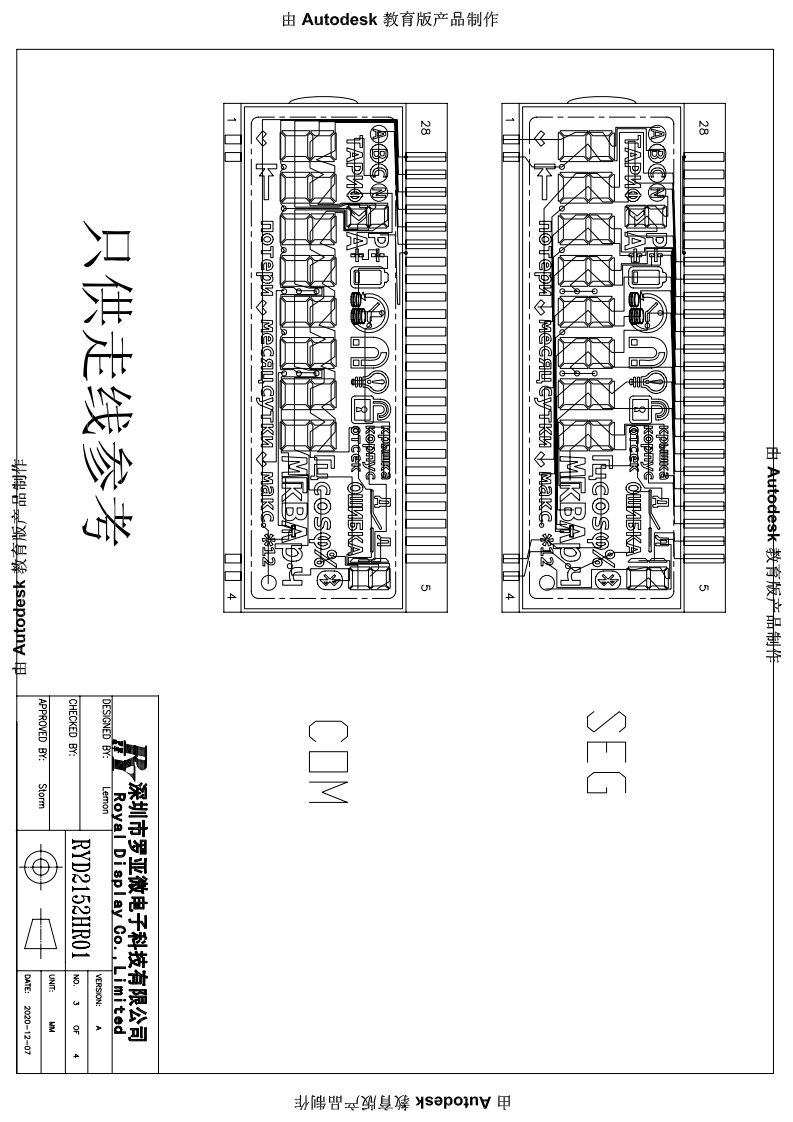Customized 7 segment TN Positive Transflective LCD display for
electricity meter
PRODUCT DESCRIPTION
* RYD2151HR01 is a liquid crystal display (LCD).
* It is composed of a Segment LCD Display.
* Specific touch panel can be designed & customized.
* RoHS & REACH compliant.
* If you can't find a suitable one, contact us to get a
recommendation.
| Item | Description |
| Model No. | RYD2152HR01 |
| Display Type | HTN, Positive Transflective |
| Outline (mm) | 74*32.5*2.8mm |
| Viewing Angle | 6 O' clock |
| Driver method | 1/4duty 1/3bias |
| Operating Voltage | 3.3V |
| Connector | PIN |
| Operating Temp | -40º C~85ºC |
| Storage Temp | -50º C~85ºC |

What Are The Advantages Of Segment Displays?
Although Segment displays are an older technology, it is still one
of the most popular. After all, they cannot display all the colors
of a TFT or OLED like what can be seen on a cell phone and tablet.
Why?
Below are key reasons why people keep designing these LCD displays
into new products.
Lowest Piece Price
The unit price of a segment display can range from less than
$0.50/piece to $15/piece depending on quantity, size of glass, and
other variables.
Lowest Tooling Fee
The tooling fee for a custom display is the lowest of all the
technologies and allows the customer to receive a LCD that is
manufactured to the exact dimensions requested, including custom
icons and segments.
Royal Display offers a one-time NRE (Non-recurring engineering) or
tooling fee. This includes all design, technical support, and
samples.
Low Power Consumption
Segment displays require less power than other display technology
such as TFT, OLED, and UWVD. This makes these LCDs ideal for
applications that are battery powered or solar powered. They
require the lowest power to drive, an estimated 2uA per centimeter
squared. Glass only displays (no backlight and no controller)
require an estimated 10% of the power that is required for a LED
backlight. In other words, a static display without a backlight
will draw around 1mA; the same display with a LED backlight will
demand from 10mA up to 25mA. Most displays can be driven at 3.3V or
5V since microprocessors can operate at both voltages. 3.3V is
becoming more popular since two double ‘AA’ batteries can produce
between 3.0V and 3.3V.







